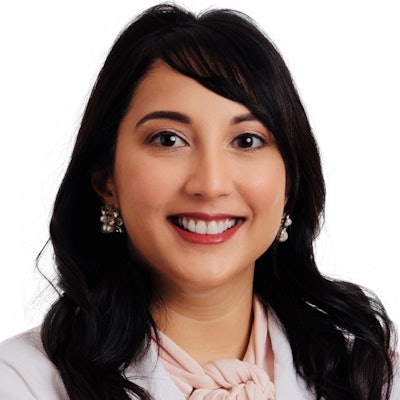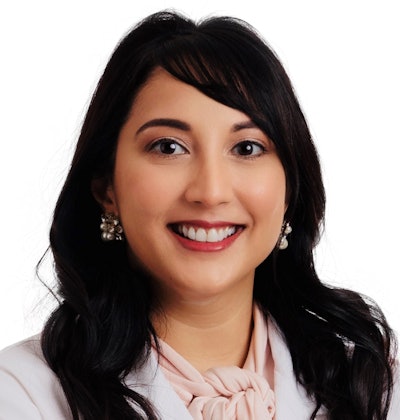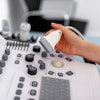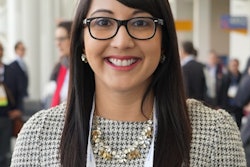
The transition from radiology training to independent practice can be an exhilarating yet challenging phase of one's career journey. Experienced radiologists understand this and are aware of the uncertainties that dominate this period.
 Dr. Amy Patel.
Dr. Amy Patel.What is the best practice type for me? Could I succeed in private practice? What should my expectations be for my career?
These questions were addressed in an opinion piece published online April 3 in the Journal of the American College of Radiology, in which a group led by Dr. Amy Patel offered some help for early-career radiologists wrestling with these questions. They compared the general characteristics of jobs in academic radiology, private practice, and teleradiology for those looking to weigh their early career options.
Today's academic medical center model is trending toward larger departments whose members are employees of multispecialty medical groups, according to Patel, an assistant professor of radiology at the University of Missouri-Kansas City, and colleagues.
The following are basic generalizations regarding what makes a job academic:
- The emphasis departments place on their academic missions: Most academic groups provide their radiologists with dedicated time to explore their areas of interest, which can range from clinical research to education, quality, health policy, informatics, and global health.
- A strong commitment to education: Job expectations may include tasks such as daily teaching at the workstation, procedural training, preparing and giving resident lectures, and mentoring. Education and teaching are among the cornerstones of a career in academics.
- Complex governance structures: Relationships among stakeholders in academic medical centers and the complexity of their governance structures tend to make it harder for the group to make practice changes.
"Salary and paid time off for academic jobs are generally less compared with those in private practice," Patel and colleagues wrote. "For many, however, the trade-off in salary and paid time off is well worth the personal and professional satisfaction provided by greater autonomy and time to pursue academic interests and attend conferences."
Private practice groups vary widely regarding ownership, academic responsibility, and group culture, the authors noted.
Questions to consider when characterizing private practice groups include the following:
- Does the group have contracts with hospitals and imaging centers?
- Does the group own its own imaging equipment or facilities?
- Are those in the group employees of hospitals or medical groups?
Salaries are higher in private practice than in academics, but details will depend on the partnership structure and whether the group is independent or employed. The time to achieve partnership also varies among groups and geographic regions. Paid time off is part of compensation and should also be considered, the authors suggested.
Teleradiology is becoming an increasingly popular career option for radiologists, but it has both benefits and downsides.
"It is now not only an option for early career radiologists, but also a feasible long-term career choice," they wrote.
Compensation models in teleradiology groups are variable. Although some of the larger teleradiology groups are salaried, nearly all have some level of compensation tied to relative value units or other measures of productivity. This is not necessarily a deterrent as productivity-based compensation has become more prevalent in many radiology careers, Patel and colleagues wrote.
The first six to 12 months are crucial when transitioning to practice, and the learning curve is steep with many variables. The authors offered a few pro tips:
- Get to know the culture and key players of your practice or institution.
- A positive, humble, and a can-do attitude goes a long way when adapting to a new culture.
- Listen and observe instead of trying to implement changes in a new job. This affords time to discuss measures you and others would like to see in your practice.
- Expect to stay late and work long hours.
Ultimately, despite granular differences among groups, a near-universal rise in imaging volumes and the high level of subspecialization required by both academic and private practice groups have made radiology jobs more alike in these vital areas than ever before, the authors noted.
"Trainees should begin dialogues with groups in late residency or early fellowship once establishing their geographic preferences to begin understanding basic group structures and hiring needs," they concluded.




















